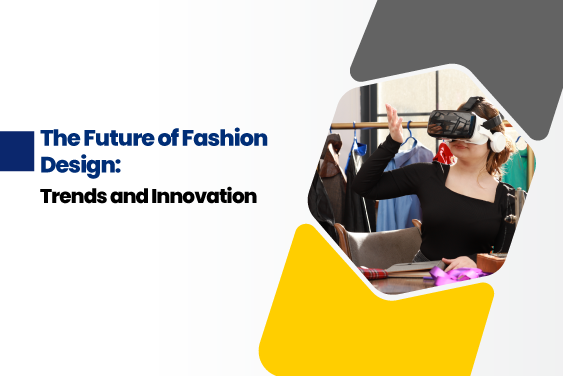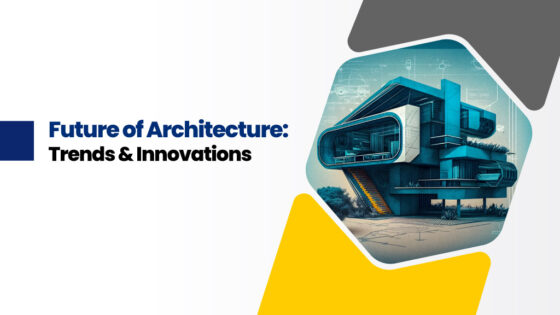In recent times, the fashion designer career requires creativity, imagination and natural beauty to create costumes and other accessories. This design process basically evolves based on the time, location, social and cultural value attributes. Fashion design is now incorporating today’s trends and various competitive industries look at the wide range of opportunities and scope in this field. However, students of the best fashion designing colleges in Tamil Nadu should be aware of how today’s fashion designing field evolved with the growing technologies. This gives various employment opportunities in different sectors like manufacturing, exporting units, starting their own business or selling their products on the market. In this article, you can find the future trends and innovations in the fashion design industry and its benefits.
Fashion Design Today’s Trends and Innovation:
Big data and analytics: Big data and analytics empower brands to use the information to create better new plans and design collections. It also allows brands to make data-driven decisions that can improve stock management and strategies. In today’s times, design brands and retailers need to utilize data analytics to develop fashion, styles and designs according to people’s choices or interests. This analytics technology improves personalization and expands deals and benefits. These predictive data help designers to make the features better for their customers and recognize the danger in terms of future fixes.
Smart clothing: Emerging businesses are offering smart clothing that meets the need for flexible clothing. These collect, store, and exchange biometric and real data of consumers. This facilitates applications for fitness and health and enhances performance. IoT also contributes to the development of fashionable attire. Smart clothing also enhances worker security, for instance by adjusting weather conditions to the needs of the customer in an unreliable environment.
Sustainability: To achieve an environmentally friendly industry, new businesses are developing circular design patterns. Such arrangements manufacture clothing from recycled fabrics and eco-textures, giving brands and customers an alternative to dangerous fast-production items. Reusing leftover shopping trash or degraded resources to create new items is another option. Also, less water is used when material and recycled fibres are used. With traditional surfaces, various materials, such as tailored materials, also offer maintenance possibilities.
Artificial Intelligence: Artificial intelligence combines fashion firms are rethinking how they approach product creation and planning. As client demands change, AI can evaluate the style and help businesses adjust and stay flexible. Brands ensure that customers receive personalized insight by integrating artificial intelligence into the purchasing experience. Also, artificial intelligence based on computer automation helps brands make personalized buying recommendations based on previous purchases. This technology also accelerates creative design improvements that better identify market interest, and strengthen client relationships.
Personalization: Fashion firms are increasingly using personalisation to offer customized plans and opportunities. More product manufacturing enables businesses to accommodate consumer demands and develop manageable and sustainable solutions for the fashion industry.
- Supports request-driven creation to avoid excessive production.
- New businesses are developing style gaming solutions to enhance personalisation
- Increase the engagement of younger clients,
- Provide real clothing
- Shoppable virtual design devices
Live Streaming: Customers are spending more time and effort on digital media as digitalization grows. Fashion companies use live streaming to provide computerized content to their target audiences. The benefits of online entertainment and in-home purchasing are combined in the real-time purchasing trend. It provides customers with an engaging and straightforward shopping experience and promotes a sense of location with their customers. The nature of broadcasting in real-time is changing as a result of developments like 5G, which continues to develop smarter content and useful online company features.
Blockchain: Data safety and accessibility are top priorities as digitization grows. Blockchain-based systems ensure the authenticity of both modern products and authentic design goods. By carefully examining deals and preventing imitation, recognition framework and item-advanced visa enhance the development of retailer discernibility. Non-fungible tokens (NFTs), which provide evidence of resource management, are another blockchain-based innovation. Also providing NFTs for the creation of the metaverse are fashion brands and creators.
Virtual style: The fashion industry is transitioning from a physical to a digital realm because of technology. Through AR or VR, virtual design solutions overcome practical constraints and provide an incredible level of freedom of creativity.
With these innovations, customers may virtually try on clothing or cosmetics before purchasing them. To create 3D models for online shopping and garment plans, 3D technologies represent the condition of the human body.
Smartly designed hardware like bright mirrors and recognition of faces. It enhances fashion and retail deals, providing customers with purchasing advice and outfit ideas as well as enabling virtual implement experiences.
Conclusion:
The fashion industry is about getting through changes based on advancements and emerging technologies. The top 10 fashion designing colleges in Coimbatore need to provide awareness about the techniques in fashion design with the advances in technology. The usage of environmentally friendly and sustainable products is also on the rise as consumers grow more aware of their impact on the environment. Technology will enable businesses to provide customized assistance at each interaction, from customized recommendations to digital .






